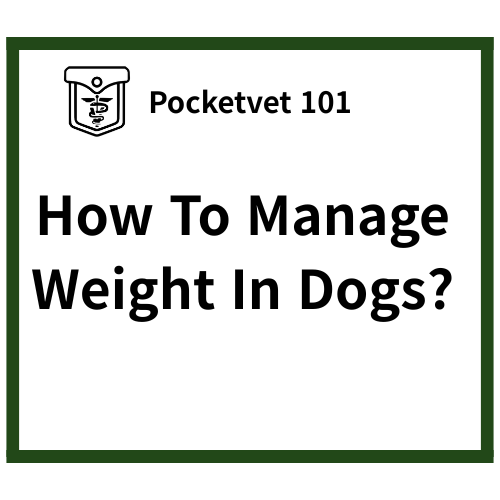
Dog Weight Management: A Guide to Keep Your Dog Happy 🐾
Maintaining your dog’s healthy weight is essential for their overall well-being and longevity. Just like humans, dogs can face a variety of health problems if they are overweight or underweight. This guide will provide you with everything you need to know about dog weight management, from understanding ideal weight ranges to implementing an effective plan for your furry friend.
Why Is Dog Weight Management Important? 🐕
Managing your dog’s weight is crucial because it directly impacts their health and quality of life. Here are some key reasons why:
- Reduces Risk of Chronic Diseases: Obesity in dogs can lead to conditions like diabetes, heart disease, and arthritis.
- Improves Mobility: Overweight dogs may struggle with physical activities, which can lead to muscle atrophy and joint issues.
- Enhances Lifespan: Studies have shown that dogs at a healthy weight live longer and have fewer age-related health problems.
- Better Quality of Life: Dogs with balanced weight levels are generally more energetic and happier.
Understanding the importance of weight management is the first step toward creating a healthier lifestyle for your dog.
How to Determine Your Dog’s Ideal Weight
Determining your dog’s ideal weight depends on several factors, including their breed, age, and activity level.
Use the Body Condition Score (BCS)
The Body Condition Score is a tool that helps assess your dog’s weight based on their physical appearance and feel. It uses a scale of 1 to 9:
- 1-3: Underweight – Ribs, spine, and bones are clearly visible. Lack of muscle mass.
- 4-5: Ideal – Ribs are easily felt but not visible. Waist is noticeable.
- 6-9: Overweight – Ribs are hard to feel under fat. No obvious waist, and fat deposits are visible.
Breed-Specific Weight Ranges
Each breed has a typical weight range. For example:
| Breed | Weight Range (lbs) |
|---|---|
| Labrador Retriever | 55-80 |
| German Shepherd | 50-90 |
| Beagle | 20-30 |
| Chihuahua | 3-6 |
| Golden Retriever | 55-75 |
Always consult your veterinarian to determine the ideal weight for your specific dog.
Causes of Weight Issues in Dogs 🐾
Understanding the root causes of your dog’s weight problem is essential for effective management. Here are common reasons why dogs become overweight or underweight:
Overweight Causes:
- Overfeeding: Giving too many treats or large portions of food.
- Lack of Exercise: Insufficient physical activity leads to calorie retention.
- Age: Older dogs are less active, making it easier for them to gain weight.
- Medical Conditions: Hypothyroidism and Cushing’s disease can cause weight gain.
Underweight Causes:
- Poor Nutrition: Feeding low-quality or insufficient food.
- Parasites: Worms and other parasites can prevent proper nutrient absorption.
- Health Issues: Illnesses like kidney disease or cancer can cause weight loss.
- Stress or Anxiety: Emotional distress can suppress appetite.
Tips for Managing Your Dog’s Weight 🥗
1. Evaluate Their Diet
Your dog’s diet plays a significant role in their weight management. Here’s how to ensure their meals are balanced:
- Choose high-quality dog food with proper protein, fat, and carbohydrate proportions.
- Avoid feeding table scraps, as they often contain too many calories and unhealthy fats.
- Use a calorie calculator for dogs to determine how much they should eat daily.
2. Control Portion Sizes
Overfeeding is a common mistake. Follow the feeding guidelines on your dog food packaging and adjust based on their weight and activity level. Use a measuring cup to ensure accuracy.
3. Provide Regular Exercise
Exercise is vital for burning excess calories and maintaining muscle mass. Tailor the type and duration of exercise to your dog’s needs:
- Small Breeds: Short walks or indoor games (15-30 minutes daily).
- Large Breeds: Longer walks, hikes, or swimming (30 minutes to 1 hour daily).
- Puppies: Frequent, shorter bursts of playtime to match their energy levels.
4. Introduce Healthy Treats
Replace high-calorie treats with healthier options like:
- Carrot sticks 🥕
- Apple slices 🍎 (seedless)
- Pumpkin 🎃 (plain and cooked)
- Green beans
5. Monitor Progress
Keep track of your dog’s weight by weighing them regularly (monthly or bi-monthly). Adjust their diet and exercise plan as needed to ensure steady progress.
When to Seek Veterinary Help 🩺
If your dog is struggling to lose or gain weight despite your efforts, it’s time to consult a veterinarian. They may perform the following:
- Blood Tests: To rule out conditions like hypothyroidism or diabetes.
- Parasite Screening: To check for worms or other parasites.
- Customized Plans: Your vet can create a tailored diet and exercise plan for your dog.
Weight Management for Puppies vs. Senior Dogs 🐕🦺
Age plays a significant role in how you should approach weight management. Here’s a breakdown:
| Age Group | Weight Management Tips |
|---|---|
| Puppies | Monitor growth carefully. Avoid overfeeding to prevent rapid weight gain. |
| Adult Dogs | Maintain a balanced diet and consistent exercise routine. |
| Senior Dogs | Adjust their diet to lower-calorie food as activity levels typically decrease with age. |
Common Mistakes to Avoid ❌
- Skipping Exercise: Even small walks are better than no activity.
- Feeding by Eye: Always measure portions instead of guessing.
- Frequent Treats: Treats should not exceed 10% of your dog’s daily caloric intake.
- Ignoring Weight Changes: Gradual weight gain or loss can indicate underlying health issues.
Final Thoughts: A Happier, Healthier Dog 🐾❤️
Managing your dog’s weight requires consistency, patience, and love. By providing a balanced diet, ensuring regular exercise, and monitoring progress, you can help your furry friend live a longer, healthier life. Remember, your vet is your best partner in this journey, so don’t hesitate to seek professional advice.
Click To Create My Dogs Weight Management Plan


Leave a Reply